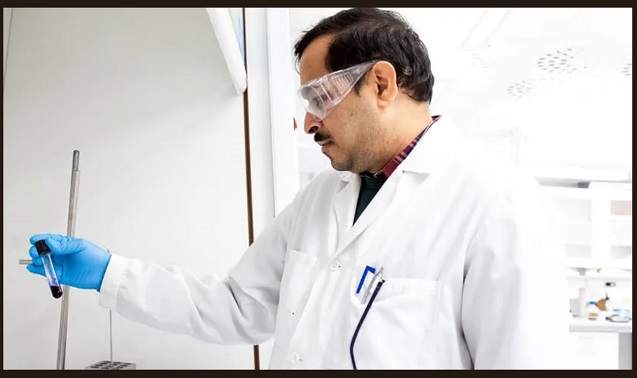New method of recycling batteries allows to recover of almost all the cobalt and has a minimal environmental impact
Lithium-ion batteries are used in a wide range of electronic devices, from smartphones to electric vehicles. And, as the demand for lithium-ion batteries increases, so does the need for efficient methods of battery recycling, especially to recover valuable metals such as cobalt.

Current methods for recycling cobalt from batteries have many drawbacks. They require significant amounts of energy and create byproducts that are dangerous to both humans and the environment.
That’s why researchers at Linnaeus University (Sweden) have developed a new, more environmentally friendly method to recover cobalt from used lithium-ion batteries.
A new, more efficient, and sustainable recycling method
Cobalt is one of the main components of modern lithium-ion batteries. The demand for cobalt is strong and expected to increase much more in the coming years.
Yet today only a fraction of discarded batteries are recycled. With more efficient and environmentally friendly methods, we can reuse a very significant portion of the cobalt that is already in use instead of mining it.
This new method for recycling cobalt developed by the Linnaeus University research group addresses two main problems in recycling today: high energy costs and hazardous waste.
To do this, he uses a liquid solvent made from readily available substances derived from urine and acetic acid to recover most of the cobalt. And in it, the researchers see good potential for large-scale application.
The combination of readily available and also relatively harmless substances with high energy efficiency gives that method the potential to work in large-scale extraction.
Additionally, the process can take place at much lower temperatures than widely used methods of recycling cobalt, making it more energy efficient.
Post– More immigrants are already eligible for a green card thanks to this new USCIS change
The cobalt recycling method
The method involves dissolving lithium cobalt oxide, a substance used in modern lithium-ion batteries, using a liquid solvent that separates the cobalt.
Researchers have extracted more than 97% of the cobalt from pieces of lithium cobalt oxide that have spent two days in the heated solvent. The raw cobalt has been used to produce new batteries, which in turn have been recycled with sustained effect.
This new method of recycling batteries also has a minimal environmental impact. With the growing demand for lithium-ion batteries, it’s important to find more efficient and environmentally friendly ways to recycle batteries and recover the valuable metals they contain.
“Current methods for recycling cobalt from batteries have many drawbacks,” says Ian Nicholls, professor of chemistry at Linnaeus University. “They require significant amounts of energy and create byproducts that are dangerous to both humans and the environment.”
He explains, “With more efficient and environmentally friendly methods, we can reuse a very significant portion of the cobalt that is already in use instead of mining it,”
A much more efficient solvent
Subramanian Suriyanarayanan, one of the researchers behind the solvent that LinnaeusIan University has investigated since 2013, notes that “the solvent is a combination of two readily available substances: a simple derivative of urea, which is found naturally in urine, and acetamide, which can be easily recovered from acetic acid.
The main benefit of the new solvent, compared to widely used methods of recycling cobalt, is that the process can take place at much lower temperatures.
The reaction is more efficient at 180 ºC. That makes our method much more energy efficient than current commercial options.
Current Battery Recycling Methods

Currently, there are three main methods for recycling rare earth metals from batteries: pyrometallurgy, hydrometallurgy, and Biometallurgy.
Pyrometallurgy is the most developed method and is commonly used in the industry. However, it has a high energy cost and can generate harmful gases.
Hydrometallurgy is a safer option in terms of harmful gases, but it often involves the use of dangerous chemical compounds.
On the other hand, Biometallurgy uses bacteria to separate metals but the process generally requires additional substances to speed up the reaction and has drawbacks in terms of efficiency, cost, and environmental risks.
Despite the limitations and challenges that exist in lithium-ion battery recycling, new techniques and technologies must continue to be researched and developed to improve the efficiency and safety of recycling these materials.
Related Post
